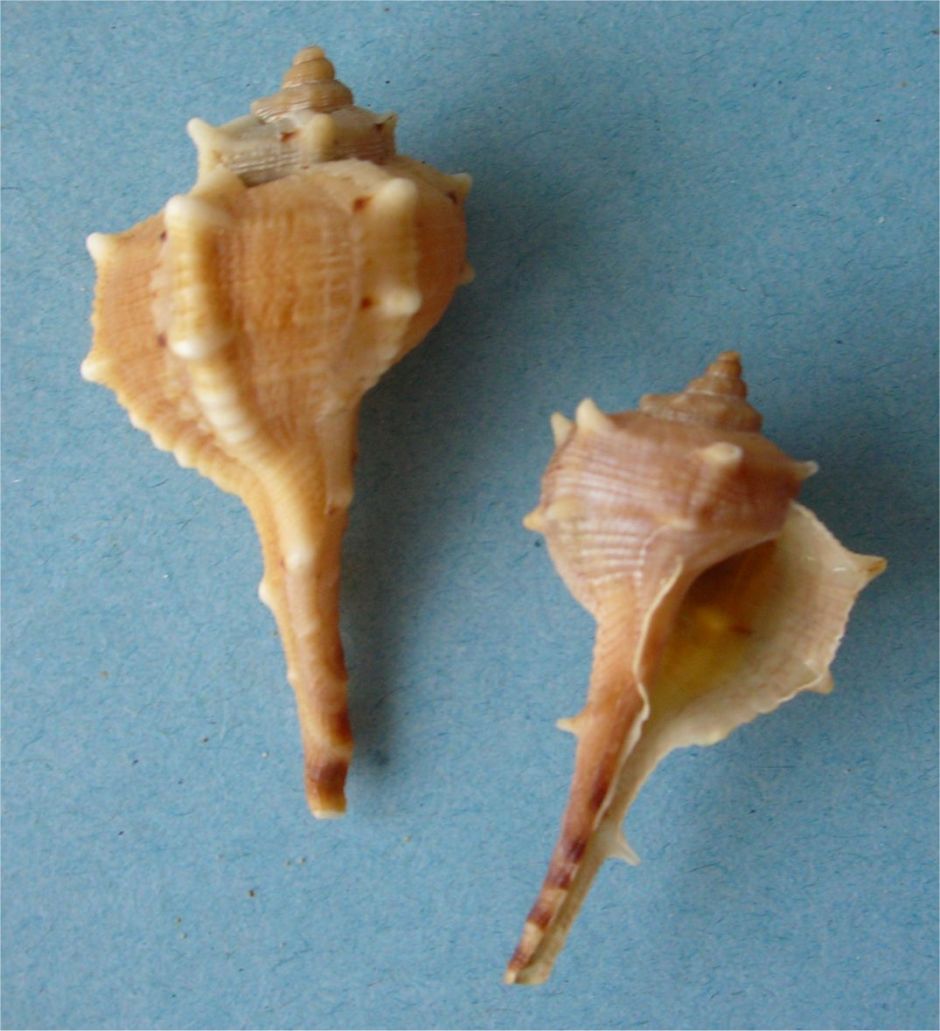A man, middle-aged, well-muscled, and wearing a lionskin, is walking his dog on a Mediterranean beach. The dog is sniffing around the shells and other debris that have been washed up with the waves, and starts to eat one of the shells, as dogs do. His mouth quickly turns bright purple.
The dog’s owner looks carefully at the animal’s mouth, fearful that it is cut and bleeding, until he sees the colour, and it is obvious that the dog is unhurt.

According to Julius Pollux, writing in his Onomasticon in the second century CE, that is how the brilliant purple dye Tyrian purple was discovered. The dog-owner was Heracles (Hercules), the great hero of Greek and Roman myth.

Pollux was an obscure Greek sophist, grammarian, and professor of rhetoric, who came from Egypt, but was appointed to the Academy in Athens, allegedly on account of his melodious voice. He was a thoroughly unreliable historian, and only told this legend in passing in what should have been a thesaurus of Attic words and phrases.
In around 1502, Aldus Manutius – pioneer Venetian publisher and scholar – resurrected and published Pollux’s book, which was re-issued in 1520, and again in 1536. Finally in 1541, a Latin translation was made, and its curious and frequently-false stories became accessible.
Rubens, a well-educated and widely-read artist, must have come across a copy of Pollux in this Latin translation, and was inspired to paint his wonderful sketch of the story, shown above. Not only that, but Theodoor van Thulden (1606-1669, a resident of Bosch’s home town, ‘s-Hertogenbosch) did the same. I have been unable to locate an image of the latter painting, which is now in the Prado, in Madrid.
Tyrian purple is a dye with a similar mystique and value (in antiquity) as the much later pigment ultramarine was to painters. Until recently, it was thought to have been used first by the Phoenicians before 1500 BCE, but the latest archaeological evidence suggests that the Minoans may have pioneered its extraction long before that, perhaps as early as 1700 BCE, and it may have been produced in southern Italy from slightly earlier.
Rubens did not depict the shell correctly either. Although Tyrian purple was extracted from a marine snail, its shell does not resemble the land snail shown in the painting above, but a typical example of one of the productive species is shown below.

Tyrian purple has a track record in ancient myths too. Ovid, in his Metamorphoses, tells us that Arachne’s father dyed wool using Phocaean (Tyrian) purple. It was Arachne who engaged in a weaving contest against Minerva, and was turned into a spider as her punishment for losing.

Tyrian purple was one of the few bright, high chroma dyes which are reasonably light-fast. It was therefore highly sought-after, and extremely expensive: in the fourth century BCE, it was reported to cost its weight in silver. Given that as many as twelve thousand sea snails were required to produce around 1.4 kg of purified dye, and that would have been sufficient for only the trim of a substantial garment, owning a robe or cloak dyed in Tyrian purple was a privilege open to a very select few.
The main site of production was the Levantine port of Tyre, where dye manufacture gave the area a distinctive smell, which was widely noted in classical literature. The snails were collected from the sea, and left to rot in large vats – giving rise to the odour – before being processed into the purified dye. The details of this extraction were only re-discovered by chance in 1998 by John Edmonds, a British engineer.
With Tyrian purple so costly to purchase, when you come across a contemporary image of someone from classical times who is dressed in purple, you know that they are someone really special, who wants to declare their high status too.

This funerary portrait of ‘Isidora’ from Egypt, in about 100-110 CE, has wealth and power written throughout her dress and accessories, from the purple robe up to her gold coronet.

This mosaic of the Empress Theodora from about 547 CE demonstrates her exclusiveness with a magnificent imperial purple robe, an epitaph to the death of perhaps hundreds of thousands of sea snails.
Although painters have inevitably been professionally interested in colour, Tyrian purple is a dye, not a pigment. Indigo is a close relative, produced by a different species of sea snail, which has been equally successful as a dye, and much cheaper. Tyrian purple has been little used in painting, but indigo has been used since classical times, and has proved to be fugitive in artists’ paints.
In oil paintings, purples and violets were invariably the result of mixing reds and blues until 1859, when the first single-pigment lightfast violet, cobalt violet, was synthesised. Rubens’ painting therefore centres on a colour which he could not use, and which was to remain a problem for artists for the next three centuries.

